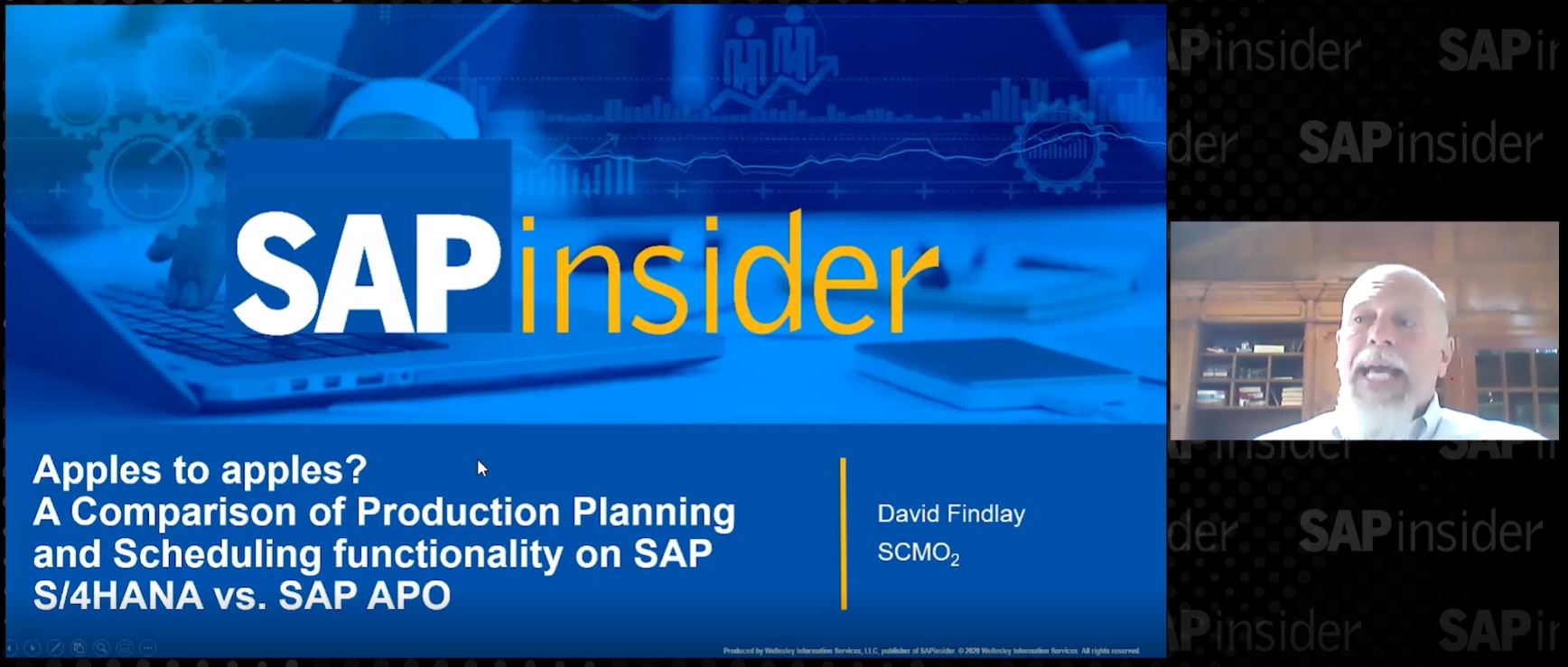Brüggen Leverages Old with New for Forecast Optimization
By John Yuva, Editor, SAPinsider
In the northern German city of Lübeck, red brick medieval architecture provides a glimpse of its historical prominence between the 12th and 16th centuries. Lübeck remains home to an active seaport and its famous marzipan confectionary treats. Sharing in the city’s rich history is H. & J. Brüggen KG (Brüggen), a company founded 153 years ago with a single mill operation before opening a second mill in Lübeck in 1886. Growth and innovation are Brüggen hallmarks that continue to this day with its production of private label cereals and muesli bars.
As a family-owned, privately held company, Brüggen’s long history includes a series of significant milestones. At the end of the 1990s, for example, the company’s board of directors made the strategic decision to produce private label cereals for global supermarket retailers. Brüggen now manufactures a large number of cereal brands and delivers to over 90 countries, with five global production sites in Germany (two locations), France, Poland, and Chile.
Explore related questions
Just as critical a milestone is Brüggen’s supply chain management transformation that began in 2008 and continues to evolve as the company expands its product offerings and global reach. Martin Gries, Head of Supply Chain for Brüggen, says that when he joined the company in 2007, SAP R/3 Enterprise was the solution of choice — now SAP ERP Central Component (ECC). However, “having SAP” and “using SAP” are two different things.
Early Days of Transformation
Despite the company expanding and integrating new processes, Brüggen wasn’t leveraging its SAP software. Gries recognized opportunities for efficiencies and essentially reimplemented the use of Brüggen’s enterprise ERP solution in the material management area. “Our production planning was done in spreadsheets, causing a media break because every production planner has its own Excel plan with a sequence for each machine,” Gries says. “The left hand must plan in spreadsheets while the right hand changes production orders in SAP.”
A production plan is needed for each production/packaging machine (line) so that the production teams know what they have to produce to fulfill customer orders. A good sequence planning for each machine reduces the set-up and cleaning time between different production orders.
Gries says Brüggen started using the capacity planning and detailed scheduling functions directly in SAP, replacing the need to use spreadsheets. A change in the planning board in SAP causes the production order and all the components to automatically reschedule. Thus, the purchasing department knows material requirements earlier due to planning board changes. “It resulted in a much faster process and reduced the possibility of errors that occurred using spreadsheets,” Gries says. “Spreadsheets no longer have influence on our work because we’re able to do our jobs in SAP.”
Forecasts Drive a Mindset Shift
The initiative to reintroduce and reengage the company with Brüggen’s enterprise SAP ERP solution was a success, Gries says. However, the next stage of Brüggen’s supply chain management transformation required an even greater shift in mindset.
According to Gries, management often relied on their experience and gut feelings when making business decisions. While that mindset might work successfully for a smaller organization, it’s far less reliable for a large company with expanding plant operations in Poland and France.
As the number of products grew, so did the number of customers. This posed a potential disruption to Brüggen’s “magic triangle” where customer service level, efficient production, and necessary inventory define the company’s supply chain management approach. Thus, the need for accurate forecast figures became essential.
Gries says because the business is more and more promotion-driven, customer lead times are much shorter. However, the lead times from suppliers are growing longer as Brüggen buys more product from the source. Dried fruit or banana chips are not coming from Germany but from all over the world.
“There are these two directions where we experience short lead-time pressure from customers but longer lead times from suppliers because we’re buying in larger volumes at the best price and quality direct from the farmer. When you buy globally, it’s imperative to have good forecast figures or you risk not purchasing enough or buying too much.”
Thus, Gries says Brüggen requires the best forecast for each product to allocate its limited production capacity in the most efficient way. Because the market lead time is shorter than Brüggen’s own lead times (e.g., production and supplier lead times), the company must produce against the forecasted figures. “To reach a high service level for our customers we need accurate information to avoid overstock or out-of-stock situations,” Gries says.
What does product growth and forecast requirements mean for SAP technology within Brüggen? SAP R/3 Enterprise existed in 1999 when Brüggen was a much smaller company with one factory. Gries says the company’s growth led to a tenfold turnover increase as well as sales volumes five times higher than two decades ago.
In response, many new processes were introduced or revised in SAP. Gries says new SAP tools such as the demand planning module of SAP Advanced Planning and Optimization were implemented. SAP add-ons were also purchased for production planning and material planning (e.g., SAP MRP monitor to classify all the company’s materials within an ABC/XYZ classification) to achieve optimal results. Once these functional optimizations were implemented, Gries says it was time to make the processes in SAP measurable.
Transparency Leads to Sustainable Results
Gries says that in Germany, companies are not as driven by key performance indicators (KPI) as those in the United States. As the complexity of Brüggen’s business grew, it needed to rely on data and not gut feelings.
“It was vital to establish a different mindset within the company to use KPIs and dashboards to drive the business forward. We researched the market to find a suitable business intelligence (BI) solution,” Gries says. “Our requirement was to implement corresponding analyses/dashboards and an automated report dispatch from our department without having to rely on our limited IT resources.”
The answer to Brüggen’s BI needs was found with Qlik, an end-to-end cloud data integration and data analytics solutions provider. Brüggen relied on Qlik’s QlikView application until 2019 when the company transitioned to Qlik Sense to leverage the app’s responsive design and dashboards across multiple user interfaces.
Mandy Klimt, Supply Chain Performance Manager at Brüggen, creates the relevant KPIs and dashboards for the entire supply chain and brings transparency to the complex SAP processes through Qlik Sense analytical capabilities.
One of the biggest benefits of SAP on the business is the ability to standardize supply chain processes across all of Brüggen’s plants, providing a solid foundation to measure data against the same methods and procedures, Klimt says. Using Qlik Sense, Gries and Klimt can now compare the results and establish benchmarks that were not possible in the past.
Within Qlik Sense, Klimt says the company implemented three different KPIs to measure forecast results:
Forecast Accuracy: Compare the demand planning figures with the as-is invoice quantities. Here, Brüggen compares different planning dates with the actual quantities sold. The most important comparison is the so-called M2 comparison (i.e., the company compares the planning from two months ago with the sales).
“This forecast accuracy is decisive for us, as we still have to take delivery times, etc., into account,” Klimt says. “Nevertheless, we also calculate the M1 comparison (i.e., how were the planned figures in the previous month compared to the actual sales in the current month).”
Value Added: Method comparison between manual forecast versus system forecast. Since SAP-APO demand planning allows Brüggen to automatically create a forecast for the future based on past data, the demand planner should ideally only change the plan when there is new information from the customer/market.
“With the key figure ‘added value,’ we can measure whether the manual overriding has really added value or whether the planner should rather rely on the system forecast,” Klimt explains.
Bias: Tendency or structural overplanning or under planning. Sometimes there is a tendency among demand planners to plan too optimistically. Therefore, it makes sense to show whether or to what extent there was structural overplanning or under planning in order to be able to take measures.
“We need high forecast accuracy to know the correct quantity of needed raw materials and to effectively negotiate contracts with our suppliers for the entire quantity of the next year,” Klimt says. “The more accurate the demand planning figures are, the less need for buying on the spot market, where prices are usually higher.”
“In addition, we also concentrated on the articles with a very high quantity and a low forecast accuracy,” Klimt adds. “The demand planner can then concentrate on a small number of articles, resulting in supply chain leverage.”
Demand Planning From MRP to Delivery
How does Brüggen achieve its demand planning goals throughout the manufacturing process? Klimt provides a detailed overview of the key segments from material requirement planning through customer delivery.
Material requirement planning. For its material requirement and capacity planning, Brüggen uses SAP ERP ECC 6.0. To analyze its inventory stock, Gries and Klimt created a Qlik Sense App called the Inventory Optimization Cockpit (IOC) to help minimize the company’s waste and optimize its stock structure.
“Usually in SAP it is not possible to execute the requirement planning for different plants at a glance,” Klimt says. “In our IOC, we can see overstocks in one plant and out-of-stocks in another plant. Thus, we can create intercompany orders to move the goods from one plant to the other plant to avoid external buying and destruction of goods where an overstock occurred.”
Purchasing. To analyze its suppliers, the purchasing optimization cockpit was created in Qlik Sense. With this app, Klimt can analyze the on-time/in-full (OTIF) for each purchase order and supplier.
“More reliable suppliers support a smoother production planning without any adjustments,” Klimt says. “Furthermore, we analyze the development of the average (Ø) lead-time and have a full spend management.”
Production. Klimt says it’s optimal if the planned production orders are produced on time and in full quantity. This process is also measured with the help of the key figure OTIF. In the production areas, the focus in the past was more on producing a certain quantity per day in total. But not whether the individual production order was delivered to the warehouse on time and in full quantity as planned.
“With the KPI OTIF, which we measure for each individual order, a change of mindset has taken place here as well. This, in turn, helps us to fulfil customer orders even better than before,” Klimt says.
Delivery to customers. Since the customer is at the center of all Brüggen’s processes, Gries and Klimt also evaluate the service level (OTIF) for its customers. They compare whether the customer order maintained in SAP has been fulfilled with the desired date and desired quantities according to each position. Furthermore, the supply chain management team can review the planning strategy against the desired delivery time. The team can easily identify materials where the XYZ classification is in the material master data “Y” category (meaning variation in demand) and the requested delivery time is short — to change them from “Make To Order” to “Make to Stock,” Klimt explains.
“The information is available in SAP in individual transactions/programs and with the help of Qlik analysis, we can bring the data together at a glance,” Klimt says. “Thus, we are able to increase the service level through better master data settings. At the end of the day, it’s not just another tool. We’re using Qlik Sense to produce measurable benefits.”
Since using Qlik on behalf of SAP, Klimt says Brüggen has achieved the following results:
- Increased its forecast accuracy by up to 7%.
- Reduced structured overplanning and under planning by a surprising 27%, allowing for a greater focus on goods in demand and capacity to produce new items.
- Saved 300,000 euros by preventing out-of-stock and overstock situations through organized intercompany orders — plants now share overstocks to avoid unnecessary external buying.
- Improved purchasing department’s supplier service level for packaging in the last year by 7%.
- Elevated customer service level by 5% compared to the starting point in 2017.
With the usage of Qlik Sense, Gries and his team can better address complexity in the supply chain more efficiently. He says the team can also measure where it sees some correlation between its three main goals: high service level, efficient production, and lowest cost of inventories.
“With the transparency of these figures, we can achieve sustainable rewards through a weekly report to management — with everyone striving for a positive number. This is a motivating exercise because if you regularly measure your processes, you know whether things are going in the right direction,” Gries says.
What Does This Mean for SAPinsiders
1. Companies don’t necessarily need the latest products or add-ons from SAP to achieve their business goals. In the case of Brüggen, it was reengaging with the ERP enterprise solution and leveraging the capabilities of the system. Don’t just “have” SAP in your enterprise, “use” SAP in your enterprise to its fullest potential.
2. From a supply chain point of view, an XYZ classification is critical in knowing which articles have regular consumption versus those with average consumption. With that knowledge, optimize your parameter settings for production and requirement planning to prevent an understock or overstock environment. Leverage your demand planning tools for maximum inventory optimization.
3. Change management can’t be understated when a company requires a major shift in operating processes or business approaches. Whether it’s encouraging employees to use SAP software or no longer rely on an antiquated approach to data collection and reporting, there must be a value proposition to influence employees to embrace and adopt the change. Brüggen accomplished quick wins to prove the benefits of using new and existing technologies for greater efficiencies.
Company Snapshot
H. & J. Brüggen KG (Brüggen)
Headquarters: Lübeck, Germany Industry: Food Manufacturing & Processing
Total employees: ~2,000 Revenue: ~400 million EUR in 2020
Global reach: Products delivered to Third-party solutions: Qlik Sense
more than 90 countries
Company details: H. & J. Brüggen KG, headquartered in Lübeck (Germany), is one of the leading European manufacturers of muesli, cereals, oat flakes, and bars, as well as other high-quality cereal products. It sells products for its customers (private label) as well as under its own brand in over 90 countries worldwide. The mid-sized family company, which has been in existence since 1868, is led by the managing partners Hanno, Jochen, and Johannes Brüggen. Brüggen produces at five production sites worldwide (2 x Germany, France, Poland, Chile). Customers are national and international retail chains, as well as manufacturers of branded goods and companies in the food processing industry.
SAP solutions: SAP ECC 6.0, SAP Advanced Planning and Optimization, demand planning module, SAP Extended Warehouse Management





